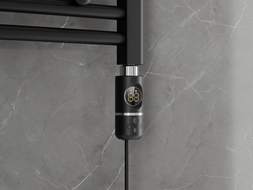
Currently, among the trends in modern bathrooms, freestanding bathtubs are increasingly common, but undoubtedly, the most popular solution, especially in smaller bathrooms, is the rectangular bathtub designed for encasement. Customers choose this solution because it is practical and allows them to effectively and efficiently utilize the given space. Moreover, a built-in rectangular bathtub makes it easy to maintain cleanliness in the area where bathing takes place.
How to Encase a Bathtub with Tiles?
There are many ways to hide the undesirable parts of a rectangular bathtub from view. The method of encasing the bathtub should primarily depend on the shape and type of the bathtub. Advocates of the traditional rectangular bathtub will be pleased not only due to its practicality but also because it allows for the encasement of the bathtub in many cases. This can be done in several ways.
- The first method is encasing the bathtub with a frame and plasterboard panels.
- Another common and more solid solution is using aerated concrete blocks. They are especially recommended for enamel bathtubs, which unfortunately due to the material they are made of, hold water temperature somewhat less effectively. Aerated concrete blocks help maintain a higher temperature inside the bathtub for a little longer.
Choosing to encase a rectangular bathtub with tiles will certainly not lead to a mistake. There are many types available on the market, and the selection is incredibly wide specifically for rectangular bathtubs. You can easily choose patterns and textures of tiles that will harmonize with the rest of the bathroom. The encasement of the bathtub with ceramic tiles is primarily low-maintenance when it comes to cleaning. If you do not want a ready-made encasement, you might prefer ceramic tiles since they are highly appreciated materials because they are durable and resistant to discoloration, water action, moisture, or mold. Tiles can easily be laid on structures made from various materials. This applies to both encasements made from aerated concrete blocks, polystyrene, as well as those made from gypsum boards. When covering the encasement with tiles, it is worth remembering to keep a few spare tiles in case one of them gets damaged. Then, you will be able to replace it without any issues. The number of bathtub models is equal to the number of solutions.
Wooden Bathtub Encasement - Is it Worth Choosing Such an Encasement?
Wood is an exceptionally noble material, elegant, evoking feelings of warmth. It makes us feel comfortable in its presence. However, when it comes to the bathroom, users are still skeptical about using this material. Some of these concerns are warranted because improperly treated wood can cause numerous problems. Modern agents and methods of treating wood allow it to be resistant to moisture and water action.
A wooden bathtub encasement combined with wooden furniture makes the bathroom look extraordinarily aesthetic and very elegant. When choosing wood for the bathroom, it is worth opting for exotic varieties. They contain many natural oils, making them resistant to any moisture. Admittedly, they may be a bit more expensive than our domestic varieties of wood, but when it comes to the bathroom and the fight against moisture - it is not worth saving in this area. Proper selection of wood and its appropriate maintenance, such as cleaning and oiling from time to time, will ensure that the wooden encasement will look impressive even after a long time. Although a wooden encasement can be made independently, it is best to consult specialists and entrust them with the work. A trusted carpenter will know exactly what type of wood to use to ensure it can serve in the bathroom for many years.
Mosaic for Bathtub Encasement?
A surface covered with mosaic undoubtedly attracts attention. It does so quite intensely, so it is not worth overdoing it with the amount of space it covers. A low bathtub encasement is a suitable place to use it, especially if it is a corner bathtub with a rounded side.
Due to the specifics of this space, it will be difficult to adhere suitable tiles to create a uniform and flat surface. The individual mosaic elements are much smaller, which allows for much greater flexibility when fitting them to the curved side of the bathtub. Mosaic works excellently with the rest of the bathroom through contrast. Darker mosaic patterns will perfectly complement whites or grays, while lighter ones will fit well with black or dark blue spaces.
If you are not sure that you can handle the encasement of the bathtub by yourself, then you can opt for ready-made encasements, of which there are countless available on the market.



















